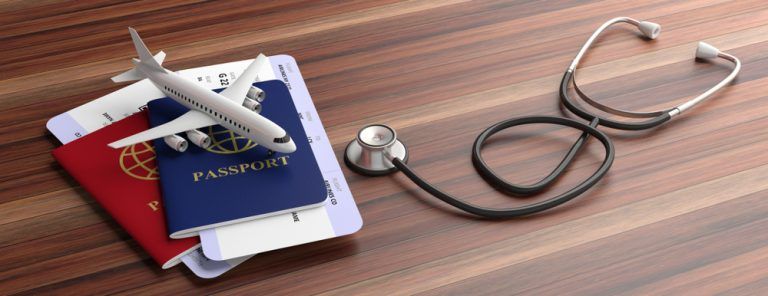The Pros and Cons of Traveling for Surgery
Medical tourism is a booming industry for many countries, leading to billions of dollars in revenue and a glut of new technology and specialist professions. (Learn More) More and more people travel across international borders for prescription medications, surgeries, and cosmetic procedures because these things cost less overseas. The location is often beautiful; there are skilled surgeons and doctors; and you can get a procedure you may not be able to get at home. (Learn More) There are many potential risks of medical tourism, including language barriers, different regulations on facilities and medications, food risks, poor quality materials or procedures that can lead to additional medical costs later, and putting yourself at physical risk when you travel too soon after the operation. (Learn More) If you do choose to travel, government agencies like the Centers for Disease Control and Prevention (CDC) offer information on their websites to help you travel safely. (Learn More)

What Is Medical Tourism? Is It Safe?
Medical tourism is a multibillion dollar industry, with citizens of the United States, the United Kingdom, Australia, and Canada traveling all over the world for all kinds of medical treatments. There are many benefits to traveling for plastic surgery, dental treatments, fertility treatments, eye surgeries, and many other forms of medical care. Treatments in other countries span the full range of medical options. According to the World Health Organization (WHO), several countries, like Turkey or Brazil, draw some of the most highly trained specialists in the world, while other countries like Mexico or Malaysia offer a range of treatments at a much lower cost than the U.S. or Europe. Who reports on the main drivers of medical tourism:
40 percent of traveling patients seek more advanced technology for their medical treatment
32 percent of medical tourists seek better-quality care and options for medically necessary procedures
15 percent of travelers seek faster access for medically necessary procedures
9 percent want lower cost treatment for procedures they need
4 percent seek lower costs to elective treatments
The Benefits of Medical Tourism
There is a reason that medical tourism is a rapidly growing industry. Here are a few reasons that more people than ever are electing to travel for various procedures:
Lower costs:
Prescription drugs, elective exams and surgeries, and even treatments that are needed for a person’s survival cost more in some countries, like the U.S. or Canada, compared to other nations. For example, in some countries, heart surgery can cost as little as $10,000 out of pocket, while it can cost as much as $100,000 in the U.S. You might save as much as 90 percent of the cost of a procedure by traveling to another country. Even with leading technology and well-trained doctors and surgeons, costs are lower. The services of administrative staff, nurses, and pharmacists cost much less in other countries compared to the U.S. Additionally, malpractice insurance in other countries costs much less, which means that the total cost of your care will be significantly lower, even if you pay entirely out of pocket.
Location for recovery:
Countries like Brazil, Costa Rica, and Malaysia all make great places for medical tourism. They are inexpensive, including the cost of travel, and they are beautiful vacation destinations. You may be able to find a vacation package for a hotel, flight, and other transit, allowing you a comfortable place to stay before and after your procedure.
Bypassing restrictions and regulations:
If you need a specific type of medication or surgical treatment that is regulated or banned in your home country, another country will likely offer what you need and want. This is especially true of plastic surgery procedures, which are tightly regulated and rarely covered by insurance in countries like the U.S. In Brazil, for example, surgeons are extensively trained, able to perform a wider range of safe cosmetic procedures, and cost far less than in Europe or the U.S.
Talented surgeons:
Doctors, especially surgeons and specialists, in other countries like India and Malaysia typically train in the United States, United Kingdom, and Australia. This means they speak fluent English, and they have specific training in standards based on international regulations. Hospitals in countries with booming medical tourism industries are also increasingly seeking international accreditation from various boards and regulatory agencies, so you can use those websites to find safe facilities.

The Risks and Detriments to Medical Tourism
Although there are many great reasons to combine medical care and international travel, there are several risks and downsides to becoming a medical tourist. Here are a few of these:
Traveling too soon:
You may be discharged from the hospital, but your recovery time, even after a minor elective procedure, could be much longer than you think. Flying after a medical procedure increases your risk of blood clots, but staying in another country can be expensive, especially if you are taking time away from work. It is important not to rush yourself through recovery, so think deeply about whether you want to save money on an operation or be able to recuperate at home with consistent supervision.
Quality of facility:
Other nations have a range of regulations and expectations for clinics, offices, and hospitals. This can mean different regulations regarding facility and instrument cleanliness. As antibiotic-resistant bacteria become a global problem, it is important to know that some nations struggle with resistant bacteria more than others. Examining the facility and reading reviews of it can help you feel secure, and it can help you learn more about the area’s cleanliness and safety. But even seeing it in person cannot give you a complete understanding of your risk of staph infection, pneumonia, or other common hospital-borne illnesses. In too many instances, poor quality surgery is also a possibility. When costs are much lower, that can mean that materials or medications are of lower quality. Some medical tourists report that their initial procedure was low-cost, but it was performed improperly, so follow-up medications, treatments, and doctors’ visits racked up the cost.
Fewer regulations:
Particularly with prescription medications, other countries have different regulations regarding medications. While prescriptions can be cheaper in other countries, they might be counterfeit, have unlisted ingredients that you could react poorly to, or have amounts of active ingredients that you do not expect. Food regulations are different in other countries too. While many larger cities are used to providing a range of foods for international travelers, it may not be the type of food you need after a more intense medical procedure, and food safety standards may lead to food poisoning.
Language barrier:
Although many doctors, surgeons, and medical specialists train in English-speaking countries, other medical workers like nurses or administrative staff may not speak your language. While the main components of your treatment, like preparing for surgery, can feel seamless, being unable to communicate during your discharge from the hospital or while picking up prescription medications can reduce the overall quality of your medical care and experience.

Health Tourism Is a Personal Choice
Ultimately, the decision to travel outside your home country for an elective or necessary medical procedure is up to you. You can save a lot of money, get quality care, and spend time in a beautiful location. If you do opt to become a medical tourist, the Centers for Disease Control and Prevention (CDC) recommends some guidelines:
Take four to six weeks prior to your trip to research the facility and discuss any specific risks.
Travel with any medications you currently take.
Ensure you have a visa if this is required.
Tell your health care providers in your home country and overseas about your travel plans and recovery time.
Gather all your medical records.
Compile all the medical and national paperwork you need to get home.
Set aside additional money in case unexpected costs arise while overseas.
References
Risks and Benefits of Medical Tourism. (December 31, 2018). Verywell Health.
Medical Tourism. (October 2, 2013). World Health Organization (WHO).
Medical Tourism. (December 5, 2016). Centers for Disease Control and Prevention (CDC).
Top Destinations for Health Tourism. (March 14, 2014). CNBC.
Your Patient Wants to be a Medical Tourist – Six Things You Should Do. (November 19, 2018). American Medical Association (AMA).
The Pros and Cons of Medical Tourism. (August 1, 2012). The Fiscal Times.

Related Articles

Age-Related Illnesses & Treatment Options
For a variety of reasons, from telomere attrition to...

Herpes & Medication: What Do Doctors Recommend?
Although the herpesvirus family is large, only about...

The Pros and Cons of Traveling for Surgery
Medical tourism is a booming industry for many countries...

How to Solve Bad Breath During Pregnancy (& Causes)
There are many reasons a pregnant woman may develop...
